-
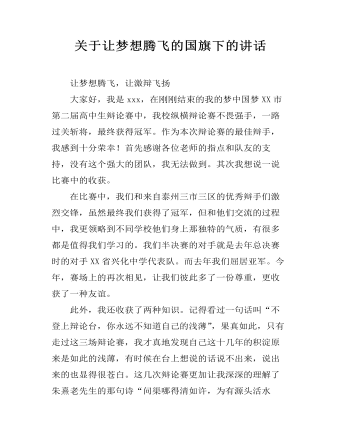
关于让梦想腾飞的国旗下的讲话
让梦想腾飞,让激辩飞扬大家好,我是xxx,在刚刚结束的我的梦中国梦XX市第二届高中生辩论赛中,我校纵横辩论赛不畏强手,一路过关斩将,最终获得冠军。作为本次辩论赛的最佳辩手,我感到十分荣幸!首先感谢各位老师的指点和队友的支持,没有这个强大的团队,我无法做到。其次我想说一说比赛中的收获。在比赛中,我们和来自泰州三市三区的优秀辩手们激烈交锋,虽然最终我们获得了冠军,但和他们交流的过程中,我更领略到不同学校他们身上那独特的气质,有很多都是值得我们学习的。我们半决赛的对手就是去年总决赛时的对手XX省兴化中学代表队。而去年我们屈居亚军。今年,赛场上的再次相见,让我们彼此多了一份尊重,更收获了一种友谊。此外,我还收获了两种知识。记得看过一句话叫“不登上辩论台,你永远不知道自己的浅薄”,果真如此,只有走过这三场辩论赛,我才真地发现自己这十几年的积淀原来是如此的浅薄,有时候在台上想说的话说不出来,说出来的也显得很苍白。这几次辩论赛更加让我深深的理解了朱熹老先生的那句诗“问渠哪得清如许,为有源头活水来”,的确,人,真的要活到老学到老,知识的山峰永远没有顶峰!
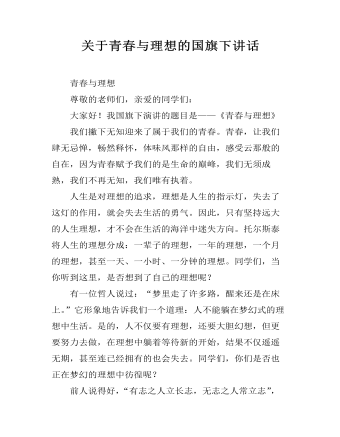
关于青春与理想的国旗下讲话
青春与理想尊敬的老师们,亲爱的同学们:大家好!我国旗下演讲的题目是——《青春与理想》我们撇下无知迎来了属于我们的青春。青春,让我们肆无忌惮,畅然释怀,体味风那样的自由,感受云那般的自在,因为青春赋予我们的是生命的巅峰,我们无须成熟,我们不再无知,我们唯有执着。人生是对理想的追求,理想是人生的指示灯,失去了这灯的作用,就会失去生活的勇气。因此,只有坚持远大的人生理想,才不会在生活的海洋中迷失方向。托尔斯泰将人生的理想分成:一辈子的理想,一年的理想,一个月的理想,甚至一天、一小时、一分钟的理想。同学们,当你听到这里,是否想到了自己的理想呢?
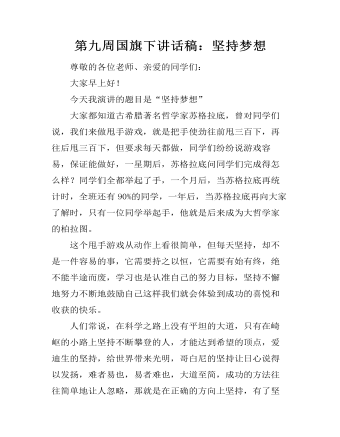
第九周国旗下讲话稿:坚持梦想
尊敬的各位老师、亲爱的同学们:大家早上好!今天我演讲的题目是“坚持梦想”大家都知道古希腊著名哲学家苏格拉底,曾对同学们说,我们来做甩手游戏,就是把手使劲往前甩三百下,再往后甩三百下,但要求每天都做,同学们纷纷说游戏容易,保证能做好,一星期后,苏格拉底问同学们完成得怎么样?同学们全都举起了手,一个月后,当苏格拉底再统计时,全班还有90%的同学,一年后,当苏格拉底再向大家了解时,只有一位同学举起手,他就是后来成为大哲学家的柏拉图。这个甩手游戏从动作上看很简单,但每天坚持,却不是一件容易的事,它需要持之以恒,它需要有始有终,绝不能半途而废,学习也是认准自己的努力目标,坚持不懈地努力不断地鼓励自己这样我们就会体验到成功的喜悦和收获的快乐。
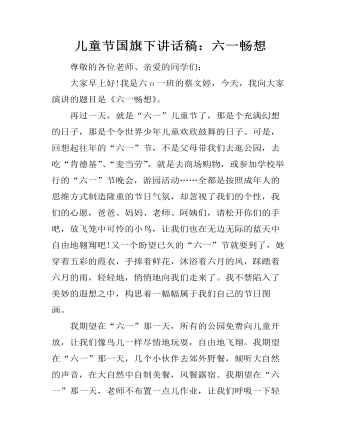
儿童节国旗下讲话稿:六一畅想
尊敬的各位老师、亲爱的同学们:大家早上好!我是六o一班的蔡文婷,今天,我向大家演讲的题目是《六一畅想》。再过一天,就是“六一”儿童节了,那是个充满幻想的日子,那是个令世界少年儿童欢欣鼓舞的日子。可是,回想起往年的“六一”节,不是父母带我们去逛公园,去吃“肯德基”、“麦当劳”,就是去商场购物,或参加学校举行的“六一”节晚会,游园活动……全都是按照成年人的思维方式制造隆重的节日气氛,却忽视了我们的个性,我们的心愿,爸爸、妈妈、老师、阿姨们,请松开你们的手吧,放飞笼中可怜的小鸟,让我们也在无边无际的蓝天中自由地翱翔吧!又一个盼望已久的“六一”节就要到了,她穿着五彩的霞衣,手捧着鲜花,沐浴着六月的风,踩踏着六月的雨,轻轻地,悄悄地向我们走来了。我不禁陷入了美妙的遐想之中,构思着一幅幅属于我们自己的节日图画。我期望在“六一”那一天,所有的公园免费向儿童开放,让我们像鸟儿一样尽情地玩耍,自由地飞翔。我期望在“六一”那一天,几个小伙伴去郊外野餐,倾听大自然的声音,在大自然中自制美餐,风餐露宿。我期望在“六一”那一天,老师不布置一点儿作业,让我们呼吸一下轻松的空气,家长不再给我们补课,让我们做一回自己的主人。
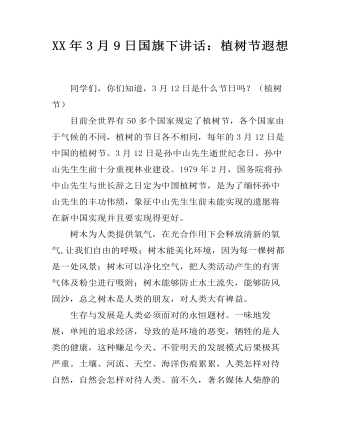
XX年3月9日国旗下讲话:植树节遐想
同学们,你们知道,3月12日是什么节日吗?(植树节)目前全世界有50多个国家规定了植树节,各个国家由于气候的不同,植树的节日各不相同,每年的3月12日是中国的植树节。3月12日是孙中山先生逝世纪念日。孙中山先生生前十分重视林业建设。1979年2月,国务院将孙中山先生与世长辞之日定为中国植树节,是为了缅怀孙中山先生的丰功伟绩,象征中山先生生前未能实现的遗愿将在新中国实现并且要实现得更好。树木为人类提供氧气,在光合作用下会释放清新的氧气,让我们自由的呼吸;树木能美化环境,因为每一棵树都是一处风景;树木可以净化空气,把人类活动产生的有害气体及粉尘进行吸附;树木能够防止水土流失,能够防风固沙,总之树木是人类的朋友,对人类大有裨益。生存与发展是人类必须面对的永恒题材。一味地发展,单纯的追求经济,导致的是环境的恶变,牺牲的是人类的健康,这种赚足今天、不管明天的发展模式后果极其严重。土壤、河流、天空、海洋伤痕累累,人类怎样对待自然,自然会怎样对待人类。

河北省宣传思想文化工作综述
我省话剧《塞罕长歌》、舞蹈《人民英雄纪念碑》分别荣获“文华大奖”和群星奖;中宣部公布第十六届精神文明建设“五个一工程”获奖名单,电影《我和我的父辈》、图书“足迹”系列荣获“特别奖”,话剧《青松岭的好日子》、歌曲《春风十万里》荣获“优秀作品奖”。放眼燕赵大地,文化旅游深度融合,文化惠民工程深入实施,文化产业快速发展,新时代文化事业生机盎然。今年中秋国庆假期,全省迎来旅游消费高峰,接待游客人数、旅游收入分别达到2019年的148.8%和144.2%,其中京津游客811.89万人次,“这么近,那么美,周末到河北”成为新时尚。“精彩!过瘾!”10月20日晚,“点亮北方戏窝子”2023年东西南北中五路丝弦优秀剧目展演在石家庄拉开帷幕,32个丝弦院团轮番献艺,“北方戏窝子”焕发新风采。日前,第十九届中国吴桥国际杂技节在石家庄开场,自创办以来,来自60多个国家和地区的600多个节目、30000多名中外嘉宾和杂技艺术家相聚河北,这场“杂技的盛会”为中外文明交流互鉴注入新力量。

河北省宣传思想文化工作综述
“开船喽!”去年6月24日,京杭大运河京冀段62公里实现互联互通。2022年6月1日起,《河北省大运河文化遗产保护利用条例》正式施行。我省积极保护好、传承好、利用好大运河,大运河沿岸生态环境、文旅融合等持续取得新进展。文艺是时代前进的号角。我省话剧《塞罕长歌》、舞蹈《人民英雄纪念碑》分别荣获“文华大奖”和群星奖;中宣部公布第十六届精神文明建设“五个一工程”获奖名单,电影《我和我的父辈》、图书“足迹”系列荣获“特别奖”,话剧《青松岭的好日子》、歌曲《春风十万里》荣获“优秀作品奖”。放眼燕赵大地,文化旅游深度融合,文化惠民工程深入实施,文化产业快速发展,新时代文化事业生机盎然。今年中秋国庆假期,全省迎来旅游消费高峰,接待游客人数、旅游收入分别达到2019年的148.8%和144.2%,其中京津游客811.89万人次,“这么近,那么美,周末到河北”成为新时尚。

高校开展宣传思想工作总结
“我们D最大的政治优势是密切联系群众,执政后的最大危险是脱离群众。”要做到密切联系群众就要善于为群众服务,为群众解决生活中的实际困难,办好事实事。“四下基层”工作法正是按照把民情了解好、政策宣传好、群众服务好、矛盾化解好、工作落实好的目标要求,帮助群众解决生产生活中的具体问题,成为D联系群众、服务群众的重要渠道。进入新时代、互联网时代、后疫情时代,高校师生的民主意识、参与意识更加强烈,更喜欢用鲜明而直接的方式表达诉求、参与互动。针对这些新变化、新特点,高校宣传思想工作要坚持以人民为中心,站稳人民立场,秉持走好群众路线的态度,坚持“四下基层”工作法,深入基层、深入一线,访民意、察民情,及时了解师生所想所愿,着力在抓住重点难点、解决薄弱点上下功夫,开展面对面宣讲、心贴心宣传、点对点传播,通过事实与道理共同阐释的方式,向广大师生讲清楚“怎么看”“怎么办”,引导师生在纷繁复杂的社会思潮中坚定立场、明辨是非。同时,新时代高校宣传思想工作坚持以立德树人为根本,通过“四下基层”,到师生群众中间开展形式多样、特色鲜明的社会主义核心价值观宣传教育活动以及丰富多彩的文化活动,为基层师生输送接地气、有温度、感染力强的宣传文化作品,满足师生多层次和多样化的精神文化需求,可以有效增进师生的获得感和幸福感,引导师生将社会主义核心价值观转化为情感认同和行为习惯。
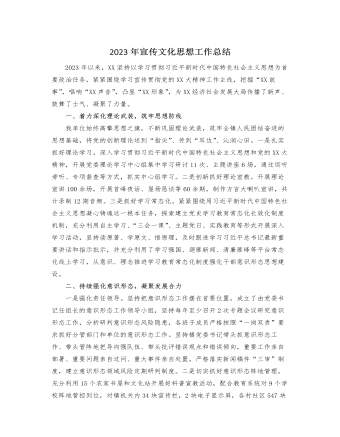
2023年宣传文化思想工作总结
三、扎实推进文明实践,引领文明新风一是深化文明村镇创建。开展“文明随手拍”活动,“红黑榜”活动,共开展12次督查,发现361个问题。获评2023年创建全国文明城市的先进乡镇,辖区三个村被评为优秀乡村。二是加强文明乡风培育。持续加强各类道德典型培树工作,共成功申报湖南好人1名、衡阳好人2名、文明家庭1户。深入开展群众性精神文明创建,突出典型引领、抓住重点人群,培育时代新人,弘扬时代新风。三是开展文明实践活动。依托新时代文明实践阵地,全镇几个村共计21支文明实践志愿服务队,广泛开展群众喜闻乐见的各类文明志愿服务活动139场,服务群众2万余人次。广泛开展“我们的节日”“雷锋家乡学雷锋”“乡村春晚”“三下乡”等群众性精神文明建设实践活动1000余场,引导群众见贤思齐,培育文明新风。
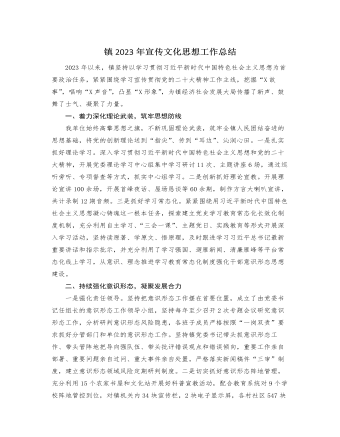
镇2023年宣传文化思想工作总结
三、扎实推进文明实践,引领文明新风一是深化文明村镇创建。开展“文明随手拍”活动,“红黑榜”活动,共开展12次督查,发现361个问题。获评2023年创建全国文明城市的先进乡镇,辖区三个村被评为优秀乡村。二是加强文明乡风培育。持续加强各类道德典型培树工作,共成功申报湖南好人1名、衡阳好人2名、文明家庭1户。深入开展群众性精神文明创建,突出典型引领、抓住重点人群,培育时代新人,弘扬时代新风。三是开展文明实践活动。依托新时代文明实践阵地,全镇几个村共计21支文明实践志愿服务队,广泛开展群众喜闻乐见的各类文明志愿服务活动139场,服务群众2万余人次。广泛开展“我们的节日”“雷锋家乡学雷锋”“乡村春晚”“三下乡”等群众性精神文明建设实践活动1000余场,引导群众见贤思齐,培育文明新风。

北师大版初中七年级数学下册用关系式表示的变量间关系说课稿2篇
一.说教材我今天说课的内容是义务教育课程标准北师大版七年级下册第四单元第二节的《用关系式表示的变量间关系》。在上节课的学习中学生已通过分析表格中的数据,感受到变量之间的相依关系,并用自己的语言加以描述,初步具有了有条理的思考和表达的能力,为本节的深入学习奠定了基础。二.说教学目标本节课根据新的教学理念和学生需要掌握的知识,确立本节课的三种教学目标:知识与能力目标:根据具体情况,能用适当的函数表示方法刻画简单实际问题中变量之间的关系,能确定简单实际问题中函数自变量的取值范围,并会求函数值。过程与方法目标:经历探索某些图形中变量之间的关系的过程,进一步体会一个变量对另一个变量的影响,发展符号感。情感态度与价值观目标:通过研究,学习培养抽象思维能力和概括能力,通过对自变量和因变量关系的表达,培养数学建模能力,增强应用意识。
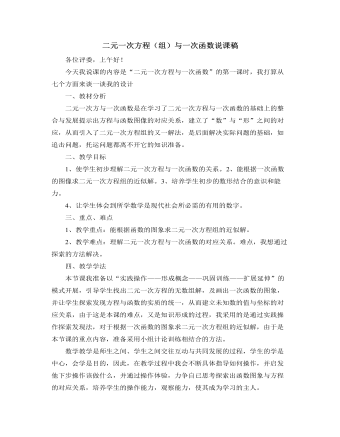
北师大版初中八年级数学上册二元一次方程(组)与一次函数说课稿
在第1环节基础上,再让同学认识到函数Y=2X-1的图象与方程2X-Y=1的对应关系,从而把两个方程组成方程组,让学生在理解二元一次方程与函数对应的基础上认识到方程组的解与交点坐标的对应关系,从而引出二元一次方程组的图象解法。3、例题训练,知识系统化通过书上的例1,用作图象的方法解方程组,让学生明白解题步骤与格式,从而规范理顺所学的图象法解方程组,例题由师生合作完成,由学生说老师写的方式。4、操作演练、形成技能让学生独立完成书P208随堂练习,给定时间,等多数学生完成后,实物投影其完成情况,并作出分析与评价。5、变式训练,延伸扩展通过让学生做收上P208的试一试,而后给一定时间相互交流,并请代表发言他的所悟,然而老师归纳总结,并让学生通过自已尝试与老师的点拔从“数”与“形”两个方面初步体会某些方程组的无解性,进一步发展学生数形结合的意识和能力。6、检测评价,课题作业
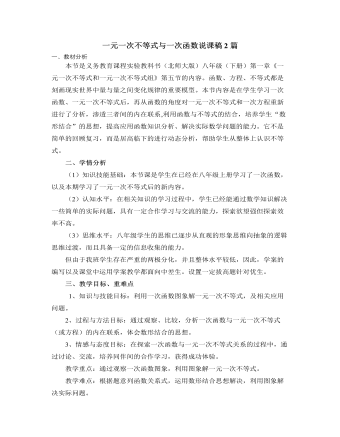
北师大版初中数学八年级下册一元一次不等式与一次函数说课稿2篇
由于任何一个一元一次不等式都能写成ax+b>0(或<0)的形式,而此式的左边与一次函数y=ax+b的右边一致,所以从变化与对应的观点考虑问题,解一元一次不等式也可以归结为两种认识:⑴从函数值的角度看,就是寻求使一次函数y=ax+b的值大于(或小于0)的自变量x的取值范围。⑵从函数图像的角度看,就是确定直线y=ax+b在x轴上(或下)方部分所有的点的横坐标所构成的集合。教学过程中,主要从以上两个角度探讨一元一次不等式与一次函数的关系。1、“动”―――学生动口说,动脑想,动手做,亲身经历知识发生发展的过程。2、“探”―――引导学生动手画图,合作讨论。通过探究学习激发强烈的探索欲望。3、“乐”―――本节课的设计力求做到与学生的生活实际联系紧一点,直观多一点,动手多一点,使学生兴趣高一点,自信心强一点,使学生乐于学习,乐于思考。4、“渗”―――在整个教学过程中,渗透用联系的观点看待数学问题的辨证思想。
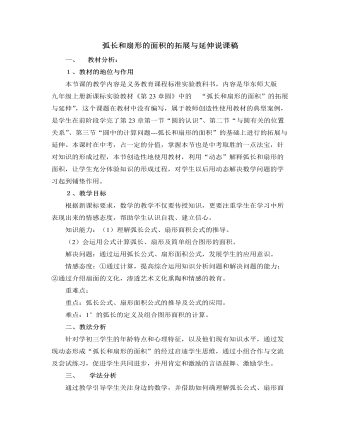
北师大版初中数学九年级下册弧长和扇形的面积的拓展与延伸说课稿
五、教学反思:时钟的秒针、分针、时针扫的图形, 汽车挡风玻璃的刮水器;刷工人刷过的面积近似看为扇形。圆中的计算问题---弧长和扇形的面积,虽然新课标、新教材要求学习,但本节教师结合学生的实际要求,将其作为内容进行拓展与延伸,具有一定的实际意义。用生活中动态几何解释扇形,体验解决问题策略的多样性,发展实践能力与创新精神。本节课,教师通过“扇子”的问题情景引入新课,它蕴含了大量的情感信息,有效激发学生的求知欲望,充分调动学生的学习积极性,注重学生的参与,让出时间与空间由学生动手实践,鼓励学生自主探索、合作交流、展示成果,提高了学生发现问题、提出问题、解决问题的能力。用“扇子变化”,帮助学生探索自然界中事物的动静结合问题,利用“扇子的文化”的新奇感激起学生的学习热情,陶冶了学生的学习情操,从而使学生更深切地理解问题,使原本单调枯燥的数学变得生动、形象,激发学生的情感,使课堂充满生机。
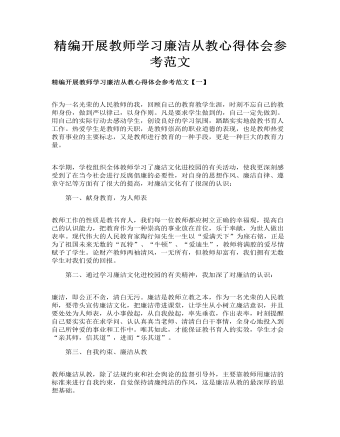
精编开展教师学习廉洁从教心得体会参考范文
第一、献身教育,为人师表 教师工作的性质是教书育人,我们每一位教师都应树立正确的幸福观,提高自己的认识能力,把教育作为一种崇高的事业放在首位,乐于奉献,为世人做出表率。现代伟大的人民教育家陶行知先生一生以“爱满天下”为座右铭,正是为了祖国未来无数的“瓦特”、“牛顿”、“爱迪生”,教师将满腔的爱尽情赋予了学生。论财产教师两袖清风,一无所有,但教师却富有,我们拥有无数学生对我们爱的回报。

新人教版高中英语必修3Unit 1 Festivals and celebrations-Discovering Useful Structure教学设计
4.That was an experience that frightened everyone. →That was _____________________. 答案:1. taking 2. being discussed 3. in the reading room 4. a frightening experienceStep 6 The meaning and function of V-ing as the predicative动词-ing形式作表语,它通常位于系动词后面,用以说明主语“是什么”或“怎么样”一种表示主语的特质、特征和状态, 其作用相当于形容词; 另一种具体说明主语的内容, 即主语等同于表语, 两者可互换。The music they are playing sounds so exciting. 他们演奏的音乐听起来令人激动。The result is disappointing. 结果令人失望。Our job is playing all kinds of music. 我们的工作就是演奏各种音乐。Seeing is believing. 眼见为实。Step 7 Practice1. It is ________(amaze) that the boy is able to solve the problem so quickly.2. Buying a car is simply _______(waste) money. 3. Please stop making the noise—it’s getting ________(annoy). 4. complete the passage with the appropriate -ing form.La Tomatina is a festival that takes place in the Spanish town Bunol every August. I think many food festivals are __________ because people are just eating. however, this festival is _________ because people don't actually eat the tomatoes. Instead, they throw them at each other! the number of people ________ part in this tomato fight, can reach up to 20,000, and it is a very __________ fight that lasts for a whole hour. The _______ thing is how clean Bunol is after the tomatoes are washed away after the fight. this is because the juice form tomatoes is really good for making surfaces clean!答案:1. amazing 2. wasting 3. annoying4. boring interesting taking exciting amazing

新人教版高中英语必修3Unit 1 Festivals and Celebrations-Reading and Thinking教学设计
The topic of this part is “Discover the reasons for festivals and celebrations.The Listening & Speaking & Talking part aims at talking about the experiences and feelings or emotions about the festivals and celebrations. This section aims at detecting the reason why the people celebrate the festivals, the time, the places, the types and the way of celebrations. It also explains why some traditions in the old celebrations are disappearing, like the firecrackers in the big cities and some new things are appearing like the prosperity of business or commerce. 1. Students can talk about what festivals they know and the reasons and the way of celebrating them.2. Students should learn the reading skills such as the headline and get the topic sentences, the structures of articles.3. Students can understand the past, the present situation of some festival around the world and why there are some changes about them. 4. Students can have the international awareness about the festivals.1. Students should learn the reading skills such as the headline and get the topic sentences, the structures of articles.2. Students can understand the past, the present situation of some festival around the world and why there are some changes about them.Step 1 Lead in---Small talkWhat festival do you like best ? Why ?I like the Spring Festivals because I can set off the fireworks, receive the lucky money and enjoy the Gala with my families.Step 2 Before reading---Pair workWhy do people celebrate different festivals ?The Spring Festivals is to celebrate the end of winter and the coming of spring and new life.The Mid-autumn Day is to celebrate the harvest and admire the moon.

新人教版高中英语必修3Unit 1 Festivals and Celebrations-Listening &Speaking&Talking教学设计
The theme of this section is “Talk about festival activities and festival experiences”.Festival and holiday is a relaxing and interesting topic for students. This part talks about the topic from the daily life of students’. In the part A ---Listening and Speaking, there are three conversations among different speakers from three countries(Japan, Rio and China), where the speakers are participating in or going to participate in the festivals and celebrations. So listening for the relationship among them is a fundamental task. Actually, with the globalization and more international communication, it is normal for Chinese or foreigners to witness different festivals and celebrations in or out of China. In the Conversation 1, a foreign reporter is interviewing a Japanese young girl who just had participated in the ceremony of the Coming-of-Age Day on the street and asking her feeling about the ceremony and the afterwards activities. Conversation 2, Chinese girl Li Mei is witnessing the Rio Carnival for the first time, and her friend Carla gives her some advice on the costumes which enables her to match with the carnival to have a good time. Conversation 3, a Chinese guide is showing a group of foreign visitors around the Lantern Festival and introducing the customs of the festival to them. The three conversations have a strong vitality and insert the festival and cultural elements from different countries. So perceiving the festivals and cultures from different countries is the second task. At the same time, the scripts also insert the targeted grammar --- v-ing as attributive and predicative, which students can perceive and experience in a real context and make a road for the further study. That is the third task. In the Part B--- Listening and Talking, the theme is “Talk about festival experience”, which is the common topic in our daily conversations. During the conversation, Song Lin, a Chinese student, asked Canadian friend Max about how to spend Christmas. In the conversation, Song Lin talked about experience and the feelings during the Chinese Spring Festival, during which there are not only some enjoyable things but some unpleasant things. After the listening, perhaps students find there are some similarities between Christmas and the Chinese Spring Festival as there are some differences in the origins and celebrations. For example, people always visit friends and relatives, decorate their houses, have a big dinner together, chat and give presents to each other.

新人教版高中英语必修3Unit 1 Festivals and Celebrations-Reading for writing教学设计二
Step 3 Analyzing article structureActivity 31. Teachers raise questions to guide students to analyze the chapter structure of this diary and think about how to describe the festival experience. (1)What should be included in the opening/body/closing paragraph(s)?(2)How did the writer arrange his/her ideas?(3)What kind of interesting details did the writer describe?(4)How did the writer describe his/her feelings/emotions during the event?2. Students read and compare the three sentence patterns in activity 2. Try to rewrite the first paragraph of the diary with these three sentence patterns. After that, students exchange corrections with their partners. Such as:●This was my first time spending three days experiencing the Naadam Festival in China’s Inner Mongolia Autonomous Region and it was an enjoyable and exciting experience. ●I'll never forget my experience at the Naadam Festival because it was my first time to watch the exciting Mongolian games of horse racing, wrestling, and archery so closely. ●I'll always remember my first experience at the Naadam Festival in China’s Inner Mongolia Autonomous Region because it was so amazing to spend three days witnessing a grand Mongolian ceremony. Step 4 Accumulation of statementsActivity 41. Ask the students to read the diary again. Look for sentences that express feelings and emotions, especially those with the -ing form and the past participle. Such as:● …horse racing, wrestling, and archery, which are all so exciting to watch. ● some amazing performances● I was surprised to see…● I was a little worried about. . . ● feeling really tiredOther emotional statements:●I absolutely enjoyed the archery, too, but the horse races were my favourite part. ●I'm finally back home now, feeling really tired, but celebrating Naadam with my friend was totally worth it. ●He invited me back for the winter to stay in a traditional Mongolian tent and cat hot pot. I can’t wait!2. In addition to the use of the -ing form and the past participle, the teacher should guide the students in the appreciation of these statements, ask them to memorize them, and encourage them to use them reasonably in writing practice.

新人教版高中英语必修3Unit 1 Festivals and Celebrations-Reading for Writing教学设计一
The topic of this part is “Write about your festival experience”.During the Listening and Speaking and Talking, students are just asked to say out their festival experiences such as the Spring Festival, Mid-autumn Day, but this part students will be asked to write down their own festival experiences. During the reading part, it introduces the Naadam Festival in Inner Mongolia Autonomous Region, which can give students a good example to imitate. Students not only learn the festival, but touch and feel the Inner Mongolian’s character, the spirit and cultural atmosphere, which can help students form the cultural awareness and learn to enjoy and value the diversity of Chinese culture.Concretely, the dairy tells the experience that the author spent the Naadam Festival in Inner Mongolia Autonomous Region with his/her friend. The structure is clear. In the opening paragraph, it introduces the topic of the Naadam Festival and the whole feeling. Then it introduces the items of the festival like the ceremony, wrestling and horse racing. Finally, it summarizes this experience. Because this part is a travel journal, we must guide students pay more attention to these details: 1. use the first person. 2. use the past tense to tell the past thing and use the present or future tense to describe the scenery. 3. use the timeline to tell the development. 4. be careful for the author’s psychology, emotion and feeling, etc.1. Read quickly to get main idea; read carefully to get the detailed information about Naadam Festival.2. Learn the structure of the reading article and language.3. Write an article about a festival experience4. Learn to use the psychology, emotions and feeling in the writing.1. Write an article about a festival experience.2. Use the structure of the reading article and language.




